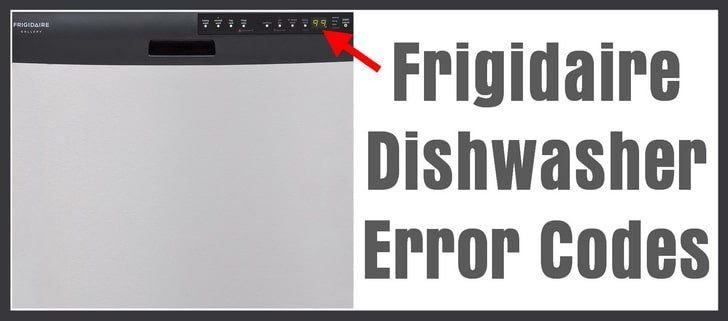
So, what’s the deal with the “OE” error code? Basically, it means that your dishwasher is having trouble draining water. Think of it like trying to empty a bathtub with a clogged drain; no matter how much you want the water to disappear, it’s just not going anywhere. This can be frustrating, but the good news is that it doesn’t necessarily mean your dishwasher is broken. In most cases, this error is a common issue that can be resolved with a bit of troubleshooting and understanding.
What Causes the “OE” Error Code?
You might be wondering, “Why does my dishwasher suddenly refuse to drain?” Well, there are a few culprits that might be causing the “OE” error code to appear. First off, let’s talk about that drainage system. Picture it like a series of pipes and hoses that whisk away the dirty water after a wash cycle. If any part of that system gets blocked or kinked, it’s like trying to sip a thick milkshake through a straw—it’s just not happening.
One common cause could be a clogged filter. Over time, bits of food and debris can collect in the dishwasher filter, slowing down or completely blocking the flow of water. Imagine having a strainer filled with rice; even a small blockage can stop water from getting through. To address this, you’ll want to clean the filter regularly. Simply remove it (usually located at the bottom of the dishwasher), rinse it under running water, and clear any gunk away.
Another potential issue is the drain hose, which might be kinked or blocked. Just like a garden hose that’s been twisted, water can’t flow through a hose that’s bent out of shape. A quick inspection and adjustment can often solve this. Make sure the hose is straight and not clogged with grease or debris. If you’re still having trouble, check where the hose connects to your sink’s plumbing; sometimes the blockage can occur there instead.
Is It Safe to Continue Using the Dishwasher?
Here’s the bottom line: using your Frigidaire dishwasher while the “OE” error code is active isn’t going to immediately cause a catastrophe. However, continuing to run it without resolving the issue could lead to bigger problems down the road. Think of it like ignoring a “check engine” light in your car. You might still get from point A to B, but you’re risking further damage.
If your dishwasher can’t drain properly, water could start to pool inside the unit. This isn’t just annoying; standing water can lead to unpleasant odors, promote mold growth, and even damage the machine’s internal components over time. Plus, it’s not fun to open the dishwasher for clean dishes only to find a mini swamp inside.
To keep everything in good shape, it’s important to address the problem sooner rather than later. Start by trying the simple fixes, like checking for clogs or kinks, and see if that resets the error. If you’ve done all you can but the problem persists, don’t hesitate to call in a professional. Sometimes, it’s best to have an expert eye on the issue to prevent any long-term damage.
Steps to Fix the “OE” Error Code
So, you’re ready to tackle the “OE” error code head-on? Awesome! Let’s walk through some steps that might help you get your dishwasher back to its squeaky-clean self. First, always unplug your appliance before you start poking around—it’s better to be safe than sorry.
Begin by inspecting and cleaning the filter. It’s fairly straightforward: open the dishwasher, locate the filter (typically at the bottom), and remove it by twisting or unscrewing it. Rinse it thoroughly under warm running water and use a soft brush to eliminate any stubborn debris. This simple step can often solve the drainage problem.
Next, examine the drain hose. Ensure it’s not kinked, and give it a gentle shake to dislodge any internal blockages. If you’re feeling adventurous, try disconnecting the hose from the sink plumbing to see if there’s an obstruction at the connection point. If the hose is damaged, it might be time for a replacement.
Finally, if these steps don’t fix the issue, there could be a problem with the dishwasher pump. This part is a bit trickier to handle, so you might want to call in a professional to avoid any further complications. Remember, it’s perfectly okay to ask for help when dealing with complex machinery.
Preventative Tips
Once you’ve sorted out the “OE” error, taking some preventative measures can help ensure you don’t end up in the same spot again. Think of it like giving your dishwasher a little extra TLC.
First and foremost, make a habit of cleaning the filter regularly. Just like you wouldn’t let your coffee maker fill with old grounds, don’t let the filter clog with debris. A quick rinse every few weeks can prevent future drainage issues.
Also, be mindful of what you’re putting into the dishwasher. Large food particles and non-dissolving items shouldn’t go in there, as they can cause blockages. Pre-rinse your dishes lightly to remove excessive food scraps before loading them in.
Last but not least, run your dishwasher with a cup of vinegar every month. It might sound like an old wives’ tale, but it’s surprisingly effective at keeping the interior fresh and buildup-free. The acid in vinegar helps break down mineral deposits and keeps everything smelling pleasant.
In conclusion, understanding the “OE” error code is the first step in keeping your Frigidaire dishwasher happy and healthy. With a little maintenance and care, you’ll be back to enjoying the convenience of a dishwasher without the worry of flooded floors or funky odors.